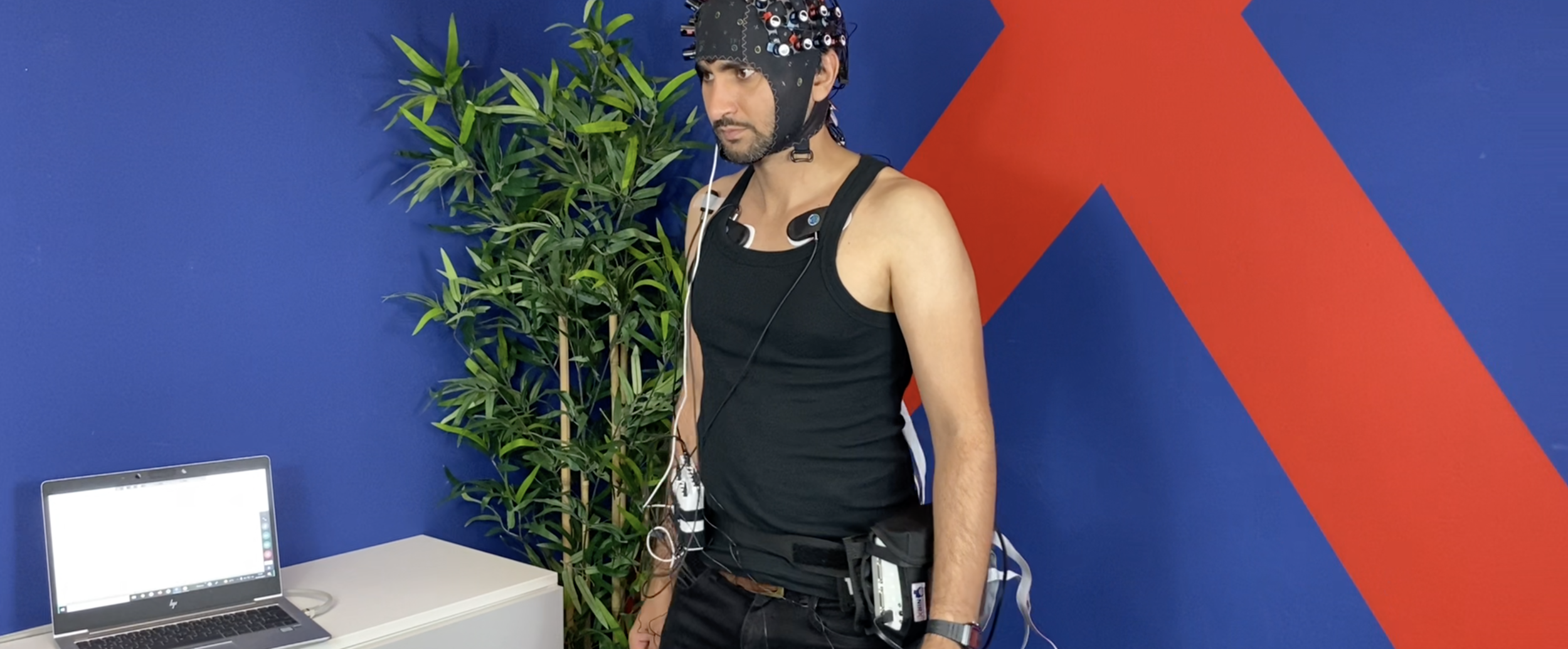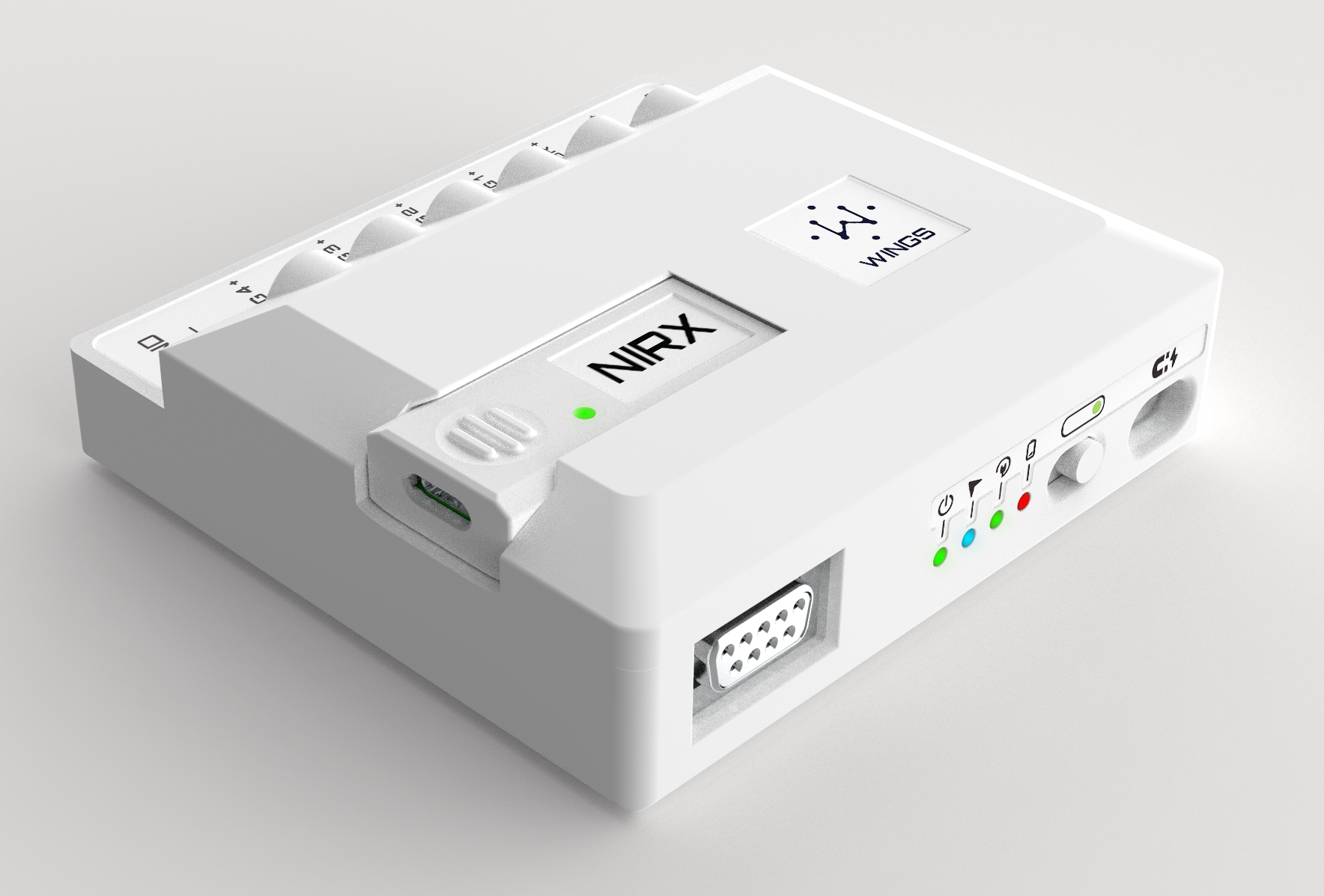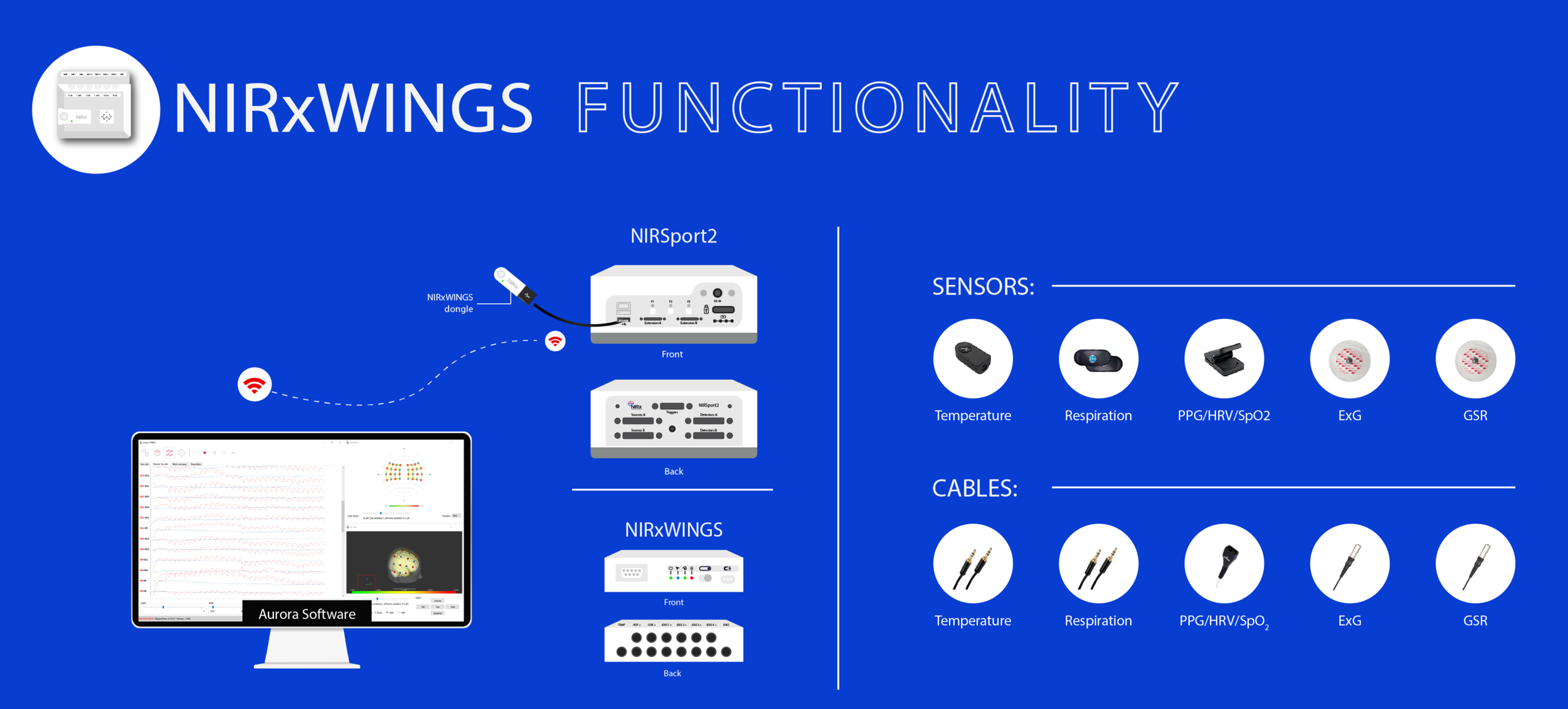The NIRxWINGS module for peripheral physiology measurements extends the NIRSport2. You can collect pulse oximetry (PPG), heart-rate, heart-rate variability (HRV), oxygen saturation (SpO2), respiration, temperature, galvanic skin response (GSR), and bipolar signals such as EMG and ECG. All signals are fully synchronized and in one data stream.
Wireless data transfer allows the participant to move freely while real-time data is stored on the device, but also streamed, and displayed in real-time. The NIRSport2 platform and the NIRxWINGS provide an LSL stream.
NIRxWINGS Advantages
The assumption is that we only measure evoked hemodynamic signal. In reality, we also measure non-evoked, systemic activity as well. When we perform a measurement, we need not only to measure the metabolic brain activity (i.e. HbO and HbR) due to the task we are interested in, but also to measure several global body parameters (e.g. HR, BR, Tonic/Phasic Skin Conductance, Blood Pressure, SpO2) that can help to explain more variance in the fNIR signal and improve the outcome the research.
With NIRxWINGS, you are able to move outside the lab to complex, dynamic and multi-sensory real-world environments to conduct systemic physiology augmented fNIRS (SPA-fNIRS). The signal processing algorithms can be optimized for artifact rejection and enable new experiments and the generation of databases.
NIRxWINGS connects to the NIRSport2 via Bluetooth dongle. NIRSport2 can connect wirelessly to the acquisition computer so you can collect physiological measurements concurrently with fNIRS data on the go.
Key specifications
Data transmission: WiFi and internal storage (via Bluetooth connection to NIRSport2)
A/D Resolution: 24-Bit
Sampling Rate: 500 Hz
Export Data: CSV (text). Exported along with fNIRS data in .SNIRF format
Sensors: combined PPG/HRV/SpO2, 12-bit solid state temperature, bioimpedance-based respiration, GSR (EDA), 4-channel ExG
Power Supply: Battery (5 h runtime)
Physical: 101 mm x 96 mm x 30 mm, 190 g (approx.)
More information coming soon.
There have been over 1000 publications with our systems, check out more papers on this page.
+ Selected References
Scholkmann, F., Tachtsidis, I., Wolf, M., & Wolf, U. (2022). Systemic physiology augmented functional near-infrared spectroscopy: a powerful approach to study the embodied human brain. Neurophotonics, 9(3), 030801.
Tachtsidis, I., & Scholkmann, F. (2016). False positives and false negatives in functional near-infrared spectroscopy: issues, challenges, and the way forward. Neurophotonics, 3(3), 031405.
Technical References:
von Lühmann, A., Boukouvalas, Z., Müller, K. R., & Adalı, T. (2019). A new blind source separation framework for signal analysis and artifact rejection in functional near-infrared spectroscopy. NeuroImage, 200, 72-88.
von Lühmann, A., Li, X., Gilmore, N., Boas, D. A., & Yücel, M. A. (2020). Open Access Multimodal fNIRS Resting State Dataset With and Without Synthetic Hemodynamic Responses. Frontiers in Neuroscience, 14.
Use Cases Useful to identify user attention, stress, and vigilance, to detect and differentiate evoked systemic physiology in fNIRs.
Ahn, S., Nguyen, T., Jang, H., Kim, J. G., & Jun, S. C. (2016). Exploring neuro-physiological correlates of drivers' mental fatigue caused by sleep deprivation using simultaneous EEG, ECG, and fNIRS data. Frontiers in human neuroscience, 10, 219.
Ortega, P., Zhao, T., & Faisal, A. A. (2020). HYGRIP: Full-Stack Characterization of Neurobehavioral Signals (fNIRS, EEG, EMG, Force, and Breathing) During a Bimanual Grip Force Control Task. Frontiers in Neuroscience, 14.
Mol, A., Maier, A. B., van Wezel, R. J., & Meskers, C. G. (2020). Multimodal monitoring of cardiovascular responses to postural changes. Frontiers in physiology, 11, 168.




